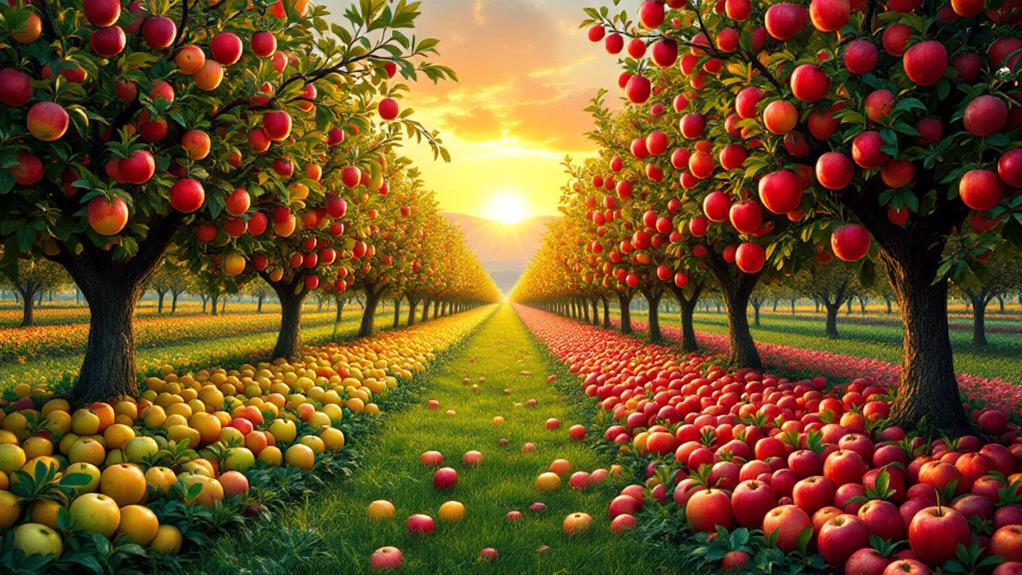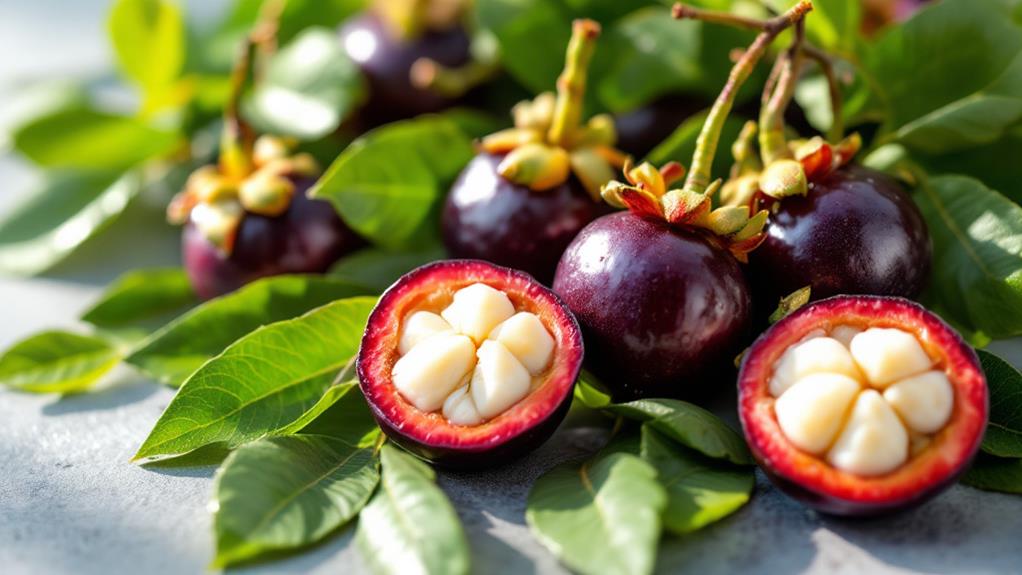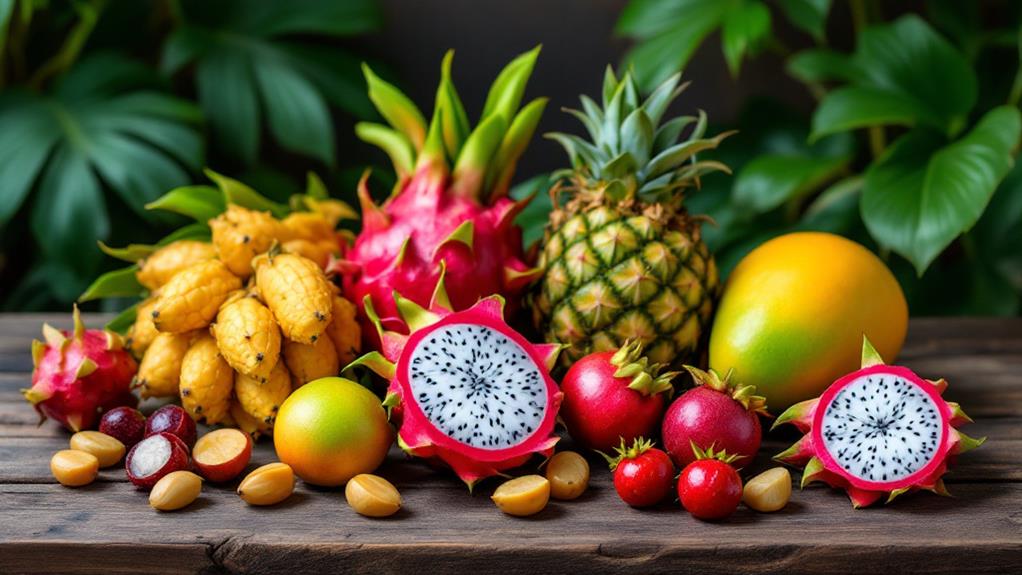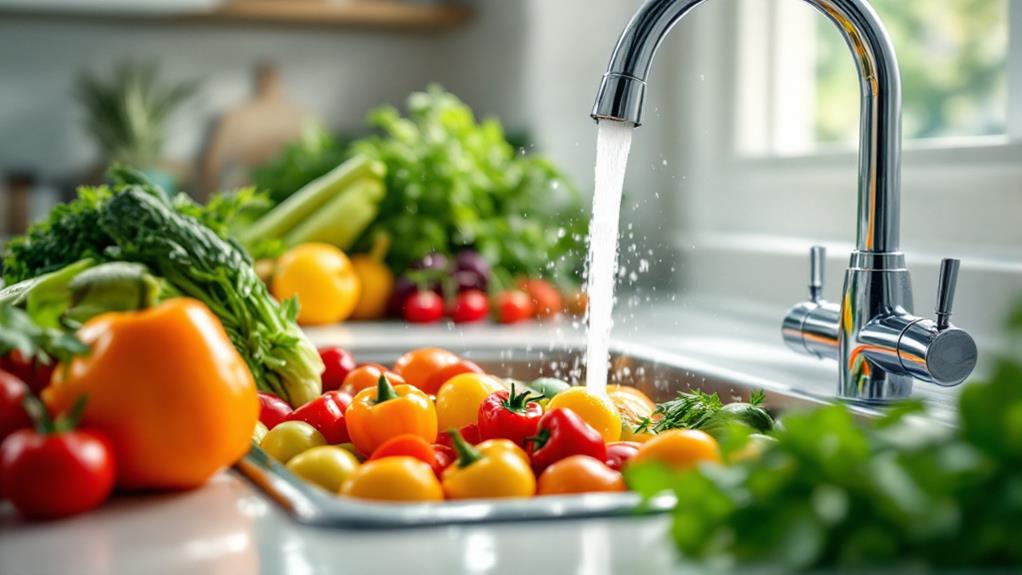Age Before Beauty: Are Ancient Fruits & Vegetables More Nutritious?
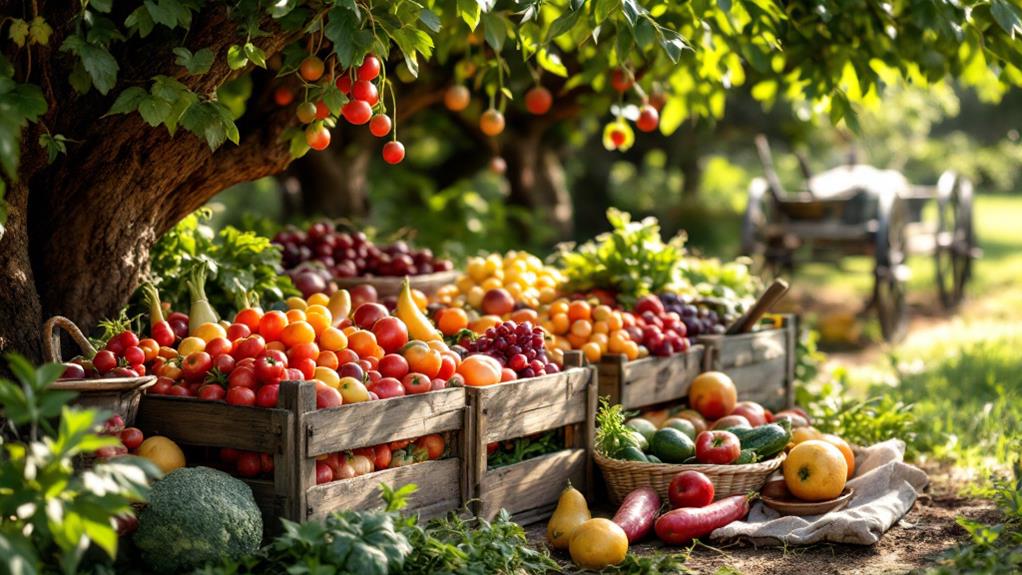
You'll find that ancient fruits and vegetables often pack more nutritional punch than modern breeds. They've got higher levels of vitamins, fiber, and unique phytonutrients that support overall wellness. Unlike their heavily bred descendants, ancient varieties provide a rich array of antioxidants and micronutrients while being less sugary. Their diverse flavors and nutrient density make them valuable for digestive health and longevity. Modern agricultural practices focus on yield and appearance, which can diminish their nutritional quality. Curious about the benefits of incorporating ancient produce into your diet and the forgotten varieties that might improve your meals? There's much to uncover.
Evolution of Fruit and Vegetable Breeding
Over centuries, selective breeding has reshaped fruits and vegetables, transforming them from their wild origins into the diverse varieties you find today. This process has been ongoing for thousands of years, as humans have sought to improve the size, flavor, and nutritional content of their food. Take modern bananas, for example. Early bananas were less sweet and filled with large, hard seeds. Through careful hybridization, we've developed the convenient, seedless, and flavorful bananas you enjoy now.
Selective breeding has likewise impacted other fruits and vegetables. Consider the watermelon: historical versions were much smaller and less sweet than the juicy, sugar-filled giants you see today. The transformation of carrots is another striking example. Originally thin and forked, these roots have been bred into larger, sweeter orange varieties, packed with beta-carotene.
Apples have undergone significant changes as well. The ancestor of modern apples, Malus sieversii, was small and sour. Now, you have over 7,500 varieties to choose from, each with unique flavors and textures. This extensive cross-pollination and selective breeding showcase how human intervention has dramatically altered the produce you consume, making them more palatable and nutritious.
Misconceptions About Ancient Produce
While selective breeding has undeniably improved the fruits and vegetables you enjoy today, it has also led to some common misconceptions about their ancient counterparts. Many people believe ancient fruits were exclusively small and bitter, but that's not entirely true. In reality, some wild fruits could be larger and sweeter than the ones cultivated now. This diversity in taste and size was a reflection of their varied ecological adaptations and culinary uses.
Selective breeding has indeed focused on boosting sweetness and palatability, but it's vital to understand that ancient fruits had their own unique nutritional profiles. Some studies suggest these ancient varieties might have contained higher levels of certain vitamins and minerals. This doesn't mean they were universally better, but rather that they offered a different balance of nutrients.
Misconceptions often arise when comparing historical varieties like peaches and watermelons to today's larger, sweeter versions. While modern fruits have certainly gained in size and sugar content, ancient produce may have provided unexplored nutritional benefits. Recognizing the evolution of fruits and vegetables helps you appreciate both the historical diversity and the modern improvements made through selective breeding. Understanding these nuances can deepen your appreciation for the complexities of our food sources.
Nutritional Profiles of Ancient Varieties
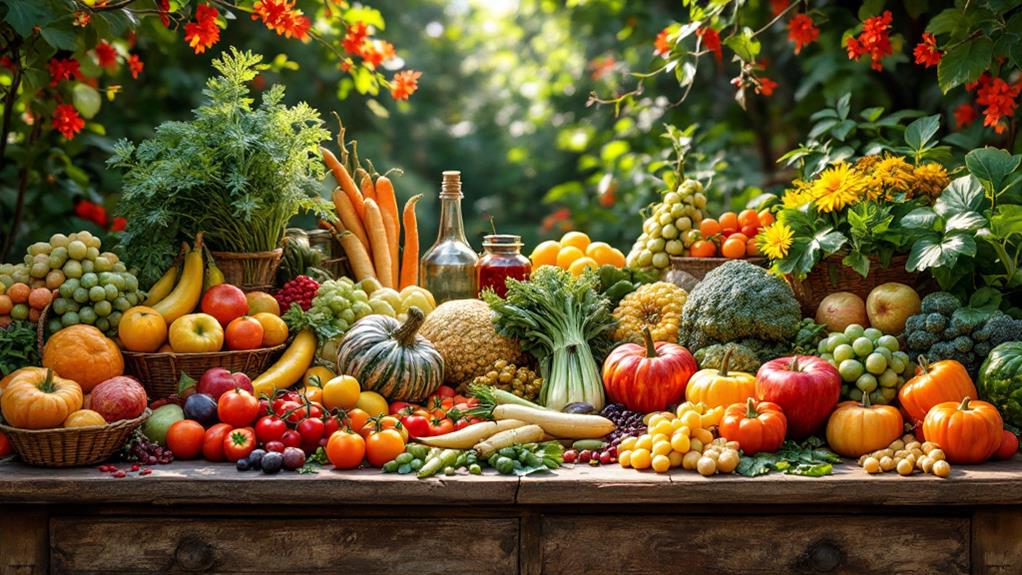
Although ancient fruits and vegetables might not have matched the aesthetic appeal of today's produce, they often packed a punch when it came to nutrition. Their nutritional profiles were rich in crucial nutrients, often surpassing modern varieties in vitamin C and fiber content. This is largely because ancient varieties weren't subject to the selectively breeding practices that prioritize size and appearance over nutrition.
Consider wild fruits like the Monkey Orange and Soursop. These ancient varieties deliver unique flavors and nutritional benefits that often outshine their modern cultivated versions, especially regarding vitamin content. Likewise, ancient grains like einkorn and emmer boast higher protein and micronutrient levels compared to many modern wheat varieties, showcasing their superior nutritional profiles.
The genetic diversity found in ancient vegetables, such as heirloom tomatoes and carrots, contributes to a broader spectrum of vitamins and minerals, making them a more nutritious choice. Research indicates that modern agricultural practices, which often favor uniformity and yield, have led to a decline in nutritional quality. By exploring ancient varieties, you can plunge into a wealth of nutrients often missing from today's produce, providing a richer, more diverse diet.
Health Benefits of Ancient Foods
Imagine biting into a wild Monkey Orange, bursting with flavors and nutrients that modern fruits often lack. Ancient fruits offer health benefits that their modern cultivated counterparts sometimes can't match. With their higher nutritional profiles, these wild fruits often contain more vitamin C and other crucial micronutrients, supporting your immune system and general health.
Consider the following benefits of consuming ancient fruits:
- Higher Vitamin Content: Many ancient fruits boast more vitamins, including vitamin C, compared to their modern cultivated counterparts.
- Unique Flavors: Their distinct taste adds variety to your diet, making healthy eating more enjoyable.
- Micronutrient Density: Despite the smaller size, wild fruits like the Monkey Orange and Soursop pack a nutritional punch.
- Support for Longevity: Historical diets rich in diverse ancient fruits have been linked to better health and longer life.
The selective breeding of modern fruits has increased sweetness and size but often at the expense of valuable nutrients. By incorporating ancient fruits into your diet, you can tap into a source of health benefits that support vitality and well-being. Their nutritional profiles not only improve your diet but also provide a delightful adventure back to nature's original bounty.
Modern vs. Ancient Dietary Impacts
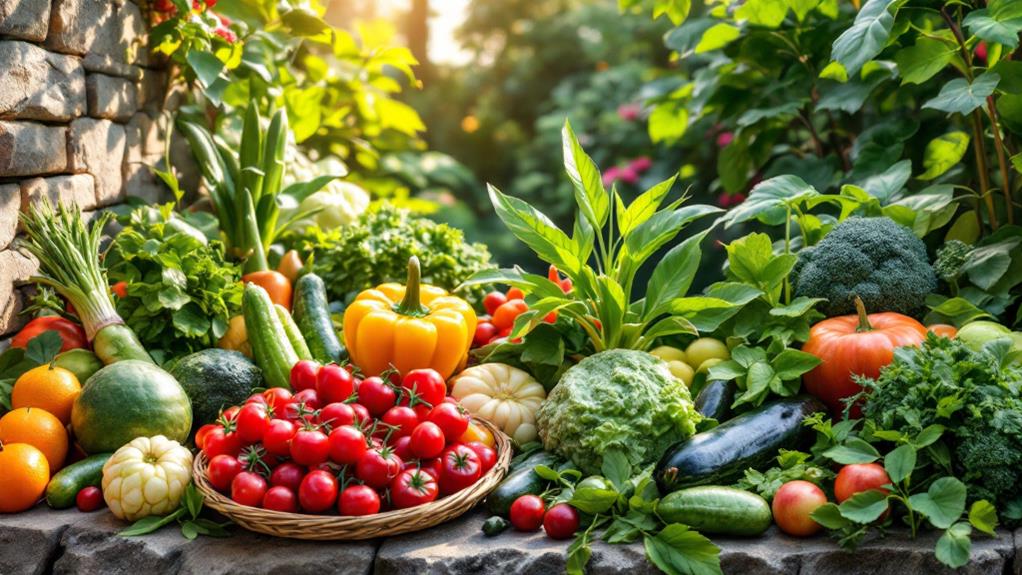
Embracing ancient dietary practices can reveal significant nutritional differences between modern and ancient foods. When you think about ancient fruits and vegetables, consider how they often packed more vitamin C than today's choices. This isn't by accident—selective breeding has shifted focus from nutritional value to taste and appearance. For instance, wild fruits like Monkey Orange and Soursop boast higher vitamin C levels than many modern varieties. So, when you choose these ancient options, you're tapping into a reservoir of nutritional benefits often overlooked in contemporary produce.
Ancient varieties also tended to be less sugary and more fibrous. Wild bananas and peaches, for example, had lower sugar content and higher fiber levels. This means they could support healthier dietary patterns, contrasting with the sweeter, less fibrous modern varieties you might find at the store. Furthermore, crops like carrots and corn have evolved, and this evolution has sometimes led to a decline in their nutritional profiles. These modern varieties often lack the diversity and potential nutritional richness of their wild ancestors.
Exploring Lesser-Known Ancient Varieties
As you investigate the world of lesser-known ancient varieties, you'll uncover a wealth of nutritional powerhouses often overlooked in the modern diet. Ancient fruits like the Monkey Orange and Junglesop stand out with their large size and rich flavors, offering untapped nutritional benefits that can surpass modern fruits in vitamin C content. These ancient varieties often reveal the nutritional value that was lost through selective breeding aimed at improving size, sweetness, or appearance.
Consider these fascinating examples:
- Monkey Orange and Junglesop: Boasting more vitamin C than many modern fruits.
- Wild Carrots: Once thin and colorful, leading to today's orange carrots rich in beta-carotene.
- Wild Eggplant: Originally small and spiny, transformed into today's sweet, versatile varieties through selective breeding.
- Wild Peaches: Historically smaller and less sweet, bred to be 64 times larger and juicier.
While modern fruits and vegetables have been selectively bred to appeal to consumer preferences, these ancient varieties remind us of the original nutritional profiles that might offer superior benefits. By rediscovering these lesser-known ancient varieties, you might just find a way to improve your diet with flavors and nutrients that modern fruits often lack.

